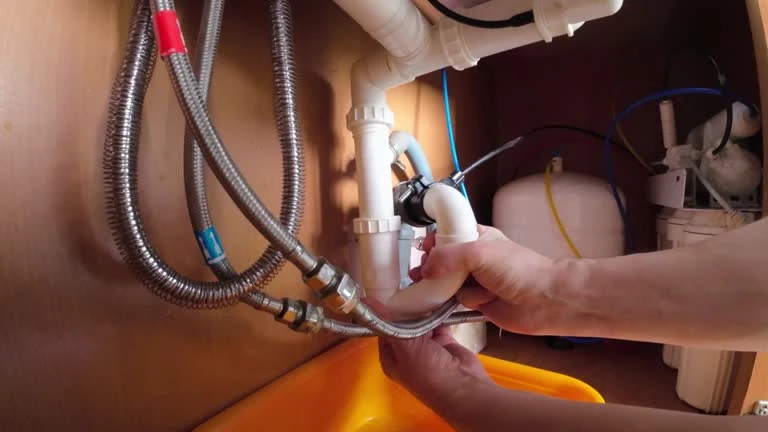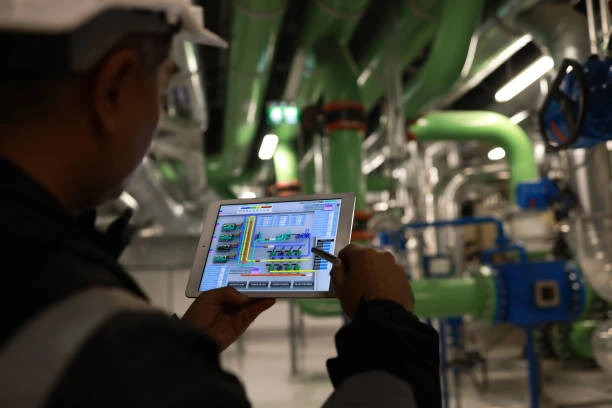Control valves are essential components in hydraulic systems. They regulate the flow and pressure of hydraulic fluids to ensure the system operates efficiently. Understanding how these valves work and their significance helps maintain hydraulic systems effectively. This article will provide a comprehensive breakdown of control valves, explaining their types, functions, and maintenance tips.
The Role of Control Valves in Hydraulic Systems
Control valves manage the flow and pressure of fluids within a hydraulic system. They direct the fluid to different parts of the system, ensuring that the machinery functions as intended. These valves are crucial for controlling the speed and force of hydraulic actuators, such as cylinders and motors. Without control valves, hydraulic systems would fail to operate effectively, leading to poor performance or damage. They are used in a wide range of applications, from construction equipment to industrial machinery, and their role is indispensable.
Types of Control Valves
There are various types of control valves used in hydraulic systems, each with unique features and functions. The most common types include directional control valves, pressure control valves, and flow control valves. Directional control valves determine the path the hydraulic fluid takes, while pressure control valves regulate the system’s pressure. Flow control valves manage the speed at which hydraulic fluid flows through the system. Each type of valve plays a critical role in the overall functioning of the hydraulic system, and they often work together to ensure optimal performance.
Directional Control Valves
Directional control valves are among the most important valves in a hydraulic system. These valves control the direction of hydraulic fluid flow. They determine which way the fluid moves, either to the front or back of an actuator, allowing the machine to perform various tasks. For example, in an excavator, directional control valves enable the movement of the arm and bucket. These valves are available in different configurations, such as 2-way, 3-way, or 4-way, depending on the specific needs of the system. The valve’s design can influence the system’s performance, such as providing smoother or faster movements.
Pressure Control Valves
Pressure control valves play a critical role in maintaining system stability. They regulate the pressure levels within a hydraulic system to prevent damage caused by excessive pressure. For example, relief valves are used to release excess pressure, ensuring the system does not overheat or fail. These valves help maintain the proper working pressure by either blocking or diverting the flow when the set pressure is exceeded. Pressure control valves are essential for protecting the hydraulic system and its components, prolonging the system’s lifespan and ensuring safe operation.
Flow Control Valves
Flow control valves manage the rate at which hydraulic fluid flows through the system. By adjusting the flow rate, these valves control the speed of actuators, such as cylinders or motors. For example, in a machine tool, flow control valves can adjust the speed of a hydraulic press or drill. They can be manual or automatic, allowing operators to adjust the flow to meet specific requirements. Flow control valves can either regulate the flow in a single direction or in both directions, depending on the system’s needs. Properly setting these valves ensures that the system runs efficiently and at the desired speed.
Characteristics of Control Valves
Control valves come with a variety of characteristics that impact their performance. One of the key features is the valve’s size, which determines how much fluid it can handle. Larger valves can accommodate higher flow rates, while smaller valves are better for low-flow systems. Additionally, control valves can be actuated manually, electrically, or hydraulically. Manual valves require physical interaction, while electrically actuated valves use solenoids or motors to operate. Hydraulic valves, on the other hand, are powered by the hydraulic fluid itself, making them ideal for high-power applications.
Maintenance of Control Valves
Proper maintenance of control valves is essential for maintaining the performance and longevity of a hydraulic system. Regular inspection is crucial to detect issues such as leaks, wear, or contamination. One common problem is dirt or debris clogging the valve, which can cause it to malfunction. Keeping the hydraulic fluid clean and ensuring it is free from contaminants helps avoid these issues. Additionally, checking for any signs of leakage around the valve connections can prevent fluid loss and maintain system efficiency. Regularly testing the valve’s functionality and replacing worn-out parts also helps keep the system running smoothly.
Troubleshooting Common Valve Issues
Control valves can experience several issues that affect the performance of a hydraulic system. One common problem is the failure of the valve to open or close properly. This may be due to dirt, wear, or faulty seals. Another issue could be pressure fluctuations, which can occur if the pressure relief valve is not functioning correctly. In such cases, it’s important to replace the faulty valve and check for other issues in the system. Regular troubleshooting and maintenance help identify and address these issues before they escalate, ensuring that the hydraulic system continues to perform optimally.
Conclusion
Control valves are integral to the operation of hydraulic systems. They regulate the flow, pressure, and direction of hydraulic fluid to ensure machinery functions smoothly. Understanding the different types of control valves, their roles, and how to maintain them is crucial for system efficiency. Proper care and maintenance help prevent costly repairs and extend the lifespan of hydraulic systems. By staying informed about control valve operation and troubleshooting, you can keep your hydraulic systems running at peak performance.
IFAN Products international standards
IFAN products strictly adhere to a comprehensive range of international standards, encompassing ISO 15874, EN 15874, ASTM F2389, DIN 8077/8078, GB/T 18742, NBR 15884, ISO 15494, EN ISO 15494, GB/T 19472, NBR 15494, ASTM 2846 (501), DIN 8079/8080 (502), ASTM F441/F441M SCH80 (503), DIN (504), DIN (505), GB/T 18993, AS/NZS 1477, CSA B137.6, NSF/ANSI 14, TIS 17-2532/1131-2535, BS 3505, BS 4346 (801), ASTM D1785 SCH40 (802), ASTM D1785 SCH80 (803), DIN (804), GB (805), GB (806), GB(901), DWV(902), ASTM D2665 (903), along with ASTM D2241, D2665, D2729, and F441/F441M series, ISO 1452, EN ISO 1452, DIN 8061/8062, GB/T 10002, AS/NZS 1477, JIS K6741, CSA B137.3, and other national and industry norms.
Connect
IFAN is a Chinese manufacturer of plastic pipes, fittings and valves with 30 years of experience. If you are interest in IFAN copper fittings, copper valves, plastic pipes and fittings, please contact us. IFAN offers you a variety of standard pipes to meet your specific needs. Click below to learn more about IFAN’s wide range of affordable and cost-effective valve products and piping system related products.
We will reply your email or fax within 24 hours.
You can call us at any time if there is any question on our production.
For more information,pls visit our webside https://waterpipefitting.com/
Pls Mailto: [email protected]
Whatsapp: +8615088288323














Recent Comments